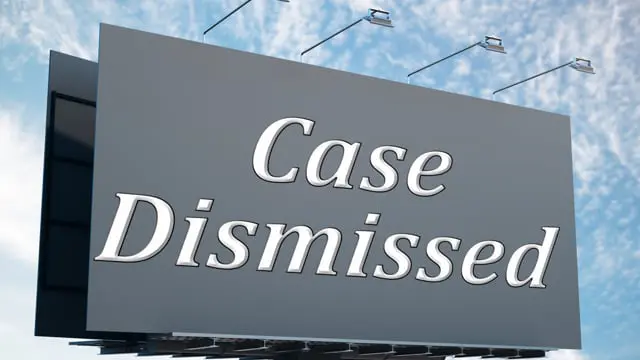When a loved one dies due to the negligence or misconduct of another, the emotional and financial fallout can be overwhelming. Wrongful death claims offer a pathway for survivors to seek compensation and justice for their loss. This comprehensive guide delves into what wrongful death entails, the legal process involved, and how families can navigate these challenging times with dignity and legal support.
What is Wrongful Death?
Wrongful death occurs when a person’s death is caused by the wrongful act, negligence, or breach of contract or warranty of another person or entity. Common causes include car accidents, negligencia médica, workplace accidents, and criminal actions. Each state has its own wrongful death statutes that define who may sue for wrongful death and what types of damages survivors may recover. Understanding these laws is crucial for families considering a wrongful death lawsuit.
The eligibility to file a claim typically extends to immediate family members such as spouses, children, and parents of unmarried children. In some cases, other relatives like siblings or grandparents may be eligible to file if they were financially dependent on the deceased.
The Legal Process for Wrongful Death Claims
The legal process for wrongful death claims begins with the establishment of liability. This involves proving that the death was caused by another party’s negligence or intentional actions. The plaintiff must demonstrate that the defendant owed a duty to the deceased, that the duty was breached, and that the breach directly caused the death and resultant damages.
This process often requires a thorough investigation, which may include collecting police reports, eyewitness statements, and expert testimonies related to the accident or incident. Representación jurídica is vital, as wrongful death cases can be complex and emotionally taxing.
Damages Recoverable in Wrongful Death Cases
Damages in wrongful death cases typically cover economic losses such as funeral expenses, medical bills, lost wages, and loss of potential future earnings. Non-economic damages might include compensation for the survivors’ mental anguish, pain and suffering, loss of companionship, guidance, and support.
Some jurisdictions also allow punitive damages, which are intended to punish the defendant for particularly egregious conduct and deter similar conduct in the future. The specifics of what damages are recoverable can vary widely by jurisdiction, highlighting the importance of consulting with a knowledgeable wrongful death attorney.
Challenges and Considerations in Wrongful Death Claims
One of the primary challenges in wrongful death claims is valuing the life of the deceased in monetary terms. This process is inherently complex and can be contentious, especially when the deceased was a primary breadwinner or a child. Actuarial experts often assist in calculating the economic impact of the loss, but the emotional losses are harder to quantify.
Time limits, known as statutes of limitations, also play a critical role. Most states require that wrongful death lawsuits be filed within one to three years of the date of death. Missing this deadline can bar the right to recover any compensation, which makes timely legal consultation essential.
Role of Technology in Enhancing Legal Procedures
Advancements in technology have significantly impacted the management of wrongful death claims. Digital tools and software help attorneys efficiently collect and organize evidence, manage documents, and communicate with clients. Online databases and legal research tools also enhance the ability to quickly access relevant laws and precedents, improving the effectiveness of legal strategies.
In addition, virtual meeting platforms have made it easier for grieving families to connect with attorneys, especially those who may find traveling difficult during such times. These technologies ensure that legal processes continue smoothly and are accessible to all involved parties.
Case Studies or Examples
In one notable case, a family received a substantial settlement after their loved one was killed by a drunk driver. The lawsuit claimed not only against the driver but also against the bar that served him excessive alcohol. This case highlighted the concept of “dram shop laws,” which hold alcohol-serving establishments responsible for harm caused by serving alcohol to visibly intoxicated patrons.
Another poignant case involved a wrongful death claim against a hospital for medical malpractice after a young woman died due to childbirth complications. The hospital failed to properly monitor her condition and respond to signs of distress. The case resulted in a multi-million dollar verdict, underscoring the importance of adherence to medical standards and protocols.
Comparative Analysis
Comparing the handling of wrongful death cases in the United States to that in the United Kingdom, one observes significant differences in legal frameworks and compensation calculations. For example, in the UK, the compensation for wrongful death cases often includes a “bereavement award,” a fixed amount that is statutory and does not typically include punitive damages, contrasting with the US approach where punitive damages can be a substantial component of the compensation.
In some European countries, such as Sweden, the system is even more distinct, focusing more on social welfare benefits to the survivors rather than on punitive or daños compensatorios against the defendant. This reflects a broader societal approach to welfare and support, contrasting with the more litigious environment in the United States.
Detailed Breakdown of Legal Consequences
Wrongful death claims can lead to various types of legal consequences beyond financial compensation. For corporations, these can include regulatory fines and increased scrutiny from oversight bodies, which may mandate changes in operations or improvements in safety protocols to prevent future incidents.
For individuals, particularly those in professions like healthcare or transportation, a wrongful death claim can result in professional disciplinary actions, including the loss of professional licenses, which can have career-long implications. These consequences highlight the broader impacts of negligence that extends beyond the immediate parties involved.
Step-by-Step Guide with Visuals
A step-by-step guide with visuals on handling a wrongful death claim could start from the immediate steps following the incident, such as securing the scene and gathering initial evidence. Flowcharts can visually guide the reader through the process of filing the claim, including timelines for mandatory filings and the stages of a lawsuit.
Visual aids could also illustrate the courtroom process for a wrongful death case, detailing each phase from jury selection to verdict. Additionally, diagrams explaining the appeal process would be beneficial for families considering all their legal options.
Technology and Tools
Modern legal practices utilize a variety of technologies to manage wrongful death claims more effectively. Case management software helps organize documents and streamline communications, ensuring that no critical deadline is missed. Additionally, digital forensics tools can play a crucial role in reconstructing accidents or medical scenarios to establish fault and causation.
Visualization tools such as 3D modeling are increasingly used to recreate accident scenes or medical procedures in court, helping jurors understand complex facts. These technologies are invaluable in presenting clear, compelling arguments that can influence the outcomes of challenging cases.
Interactive Elements
Interactive online resources can help families understand their rights and the legal process involved in wrongful death claims. Interactive timelines can show key stages in a claim, while decision trees can help users navigate through various legal decisions they might face, such as whether to settle or go to trial.
Webinars and virtual Q&A sessions with wrongful death attorneys can provide real-time answers to pressing questions from families, making legal advice more accessible and tailored to individual needs.
FAQ Section – Questions and Answers
Q: What is the statute of limitations for filing a wrongful death claim? A: The statute of limitations varies by state but generally ranges from one to three years from the date of death. It’s crucial to consult with an attorney to ensure compliance with these deadlines.
Q: Can multiple family members file a wrongful death claim? A: Typically, a wrongful death claim is filed by a representative on behalf of all eligible survivors. This representative could be a spouse, parent, or child of the deceased.
Legislative Changes and Trends
Recent legislative changes have focused on expanding the scope of who can file wrongful death claims, reflecting a broader understanding of “family” in modern society. Some states are considering laws that would allow domestic partners, stepchildren, and others financially dependent on the deceased to file claims.
There’s also a trend toward increasing transparency and accountability in medical and industrial sectors, with new regulations aiming to reduce the incidents that lead to wrongful deaths. These legislative efforts indicate a growing commitment to protecting citizens from negligence and misconduct.
Consideraciones éticas
The ethical handling of wrongful death cases involves sensitivity to the grieving family’s situation while rigorously pursuing justice. Attorneys must balance aggressive legal tactics with compassionate client interactions, ensuring that families do not feel overwhelmed by the adversarial nature of legal proceedings.
Issues such as privacy, especially when dealing with the deceased’s medical or personal history, must be handled with utmost respect and discretion to avoid further distressing the family.
Conclusión
The loss of a loved one is an incredibly difficult experience, compounded by the complexity of legal proceedings in wrongful death cases. However, understanding wrongful death claims and knowing the legal options can empower families to make informed decisions. It’s crucial for affected families to seek the guidance of experienced wrongful death attorneys who can provide the necessary support and representation to navigate these challenging waters effectively.
For families dealing with the aftermath of a wrongful death, it’s important to remember that the law is on your side, and there are resources available to help you seek justice and financial stability during such difficult times.
Type of Attorney for This Type of Legality to Represent the Client and How to Find Them on Attorneys.Media
Families seeking justice for a wrongful death should look for attorneys with specific expertise in wrongful death claims. These attorneys not only understand the legal nuances but also have experience handling the emotional complexities involved in such cases.
On Attorneys.Media, clients can filter attorneys based on their specialization in wrongful death cases. The platform offers detailed profiles, including credentials, client video testimonials, and case histories, helping families make informed decisions. It’s advisable to look for attorneys who offer empathy and personal attention, as these qualities are crucial for supporting families through the challenging process of a wrongful death claim.









